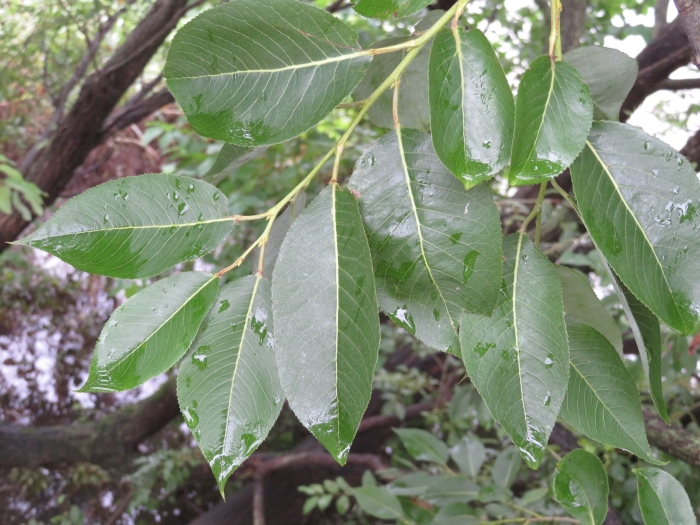Japanese Pussy Willow
(Salix chaenomeloides)
Japanese Pussy Willow (Salix chaenomeloides)
/
/

© belvedere04
CC BY 4.0
Image By:
© belvedere04
Recorded By:
Copyright:
CC BY 4.0
Copyright Notice:
Photo by: © belvedere04 | License Type: CC BY 4.0 | License URL: http://creativecommons.org/licenses/by/4.0/ | Uploader: belvedere04 | Publisher: iNaturalist |





































Estimated Native Range
Summary
Salix chaenomeloides, commonly known as Japanese Pussy Willow, is a deciduous tree that is native to riparian zones, wetlands, and moist open woodlands in Japan, Korea, and China. It typically grows to a height of 33-66 feet (10-20 meters) and is characterized by its upright form and spreading branches. The tree is particularly noted for its large, fluffy, silver-pink catkins that appear in early spring before the leaves, providing an early nectar source for pollinators and adding ornamental value. The catkins are followed by green leaves that turn yellow in the fall.
Japanese Pussy Willow is appreciated for its rapid growth and ease of maintenance, making it a popular choice for wet areas in gardens and landscapes. It is often used for erosion control along stream banks and in naturalized areas. In cultivation, it requires consistently moist soil and can tolerate a range of soil types, from clay to loam. It prefers full sun to partial shade and can be pruned to maintain a desired shape or size. While it is not commonly afflicted by serious diseases or pests, it can be susceptible to willow blight and root rot in poorly drained conditions. This species is also used in floristry for its decorative catkins.CC BY-SA 4.0
Japanese Pussy Willow is appreciated for its rapid growth and ease of maintenance, making it a popular choice for wet areas in gardens and landscapes. It is often used for erosion control along stream banks and in naturalized areas. In cultivation, it requires consistently moist soil and can tolerate a range of soil types, from clay to loam. It prefers full sun to partial shade and can be pruned to maintain a desired shape or size. While it is not commonly afflicted by serious diseases or pests, it can be susceptible to willow blight and root rot in poorly drained conditions. This species is also used in floristry for its decorative catkins.CC BY-SA 4.0
Plant Description
- Plant Type: Shrub, Tree
- Height: 15-20 feet
- Width: 6-20 feet
- Growth Rate: Rapid
- Flower Color: N/A
- Flowering Season: Spring, Winter
- Leaf Retention: Deciduous
Growth Requirements
- Sun: Full Sun, Part Shade
- Water: Medium
- Drainage: Fast, Medium
Common Uses
Bank Stabilization, Bird Garden, Butterfly Garden, Low Maintenance, Water Garden
Natural Habitat
Native to riparian zones, wetlands, and moist open woodlands in Japan, Korea, and China
Other Names
Common Names: Giant Pussy Willow
Scientific Names: Salix chaenomeloides , Pleiarina glandulosa , Salix chaenomeloides f. chaenomeloides , Salix chaenomeloides f. obtusa , Salix chaenomeloides f. pilosa , Salix chaenomeloides var. pilosa , Salix chaenomeloides var. pilosa , Salix glandulosa , Salix glandulosa f. obtusa , Salix glandulosa var. glabra , Salix glandulosa var. pilosa
GBIF Accepted Name: